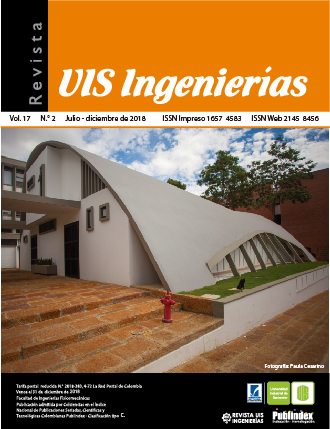Improvements in power factor by replacing fluorescent tubes with equivalent LED tubes
Published 2018-06-19
Keywords
- Lighting,
- power factor,
- displacement factor,
- high frequencies,
- LED
How to Cite
Abstract
The recent replacement of the illumination of the sub fluvial tunnel Uranga – Silvestre Begnis, that joins the cities of Paraná and Santa Fe in the Argentinean Republic, has raised a number of technical questions regarding the replacement for new lighting technologies. In this work, 4200 fluorescent tubes T8 of 36w were replaced by new technology LED tubes of 14w. The replacement was based on the need to reduce energy consumption and to achieve a reduction in operating costs. Among the main hypothesis before the work, an increase in the total harmonic distortion from connecting nonlinear loads was evaluated. Among the specifications of the statement work, maximum permissible THD limits were indicated. However, the original THD of the use of electromagnetic ballasts with fluorescent tubes was not take into consideration. This work shows the improvements detected in the parameters of electrical quality from the use of LED equipment with suitable characteristics. The results show a remarkable improvement of power factor with values close to 0.9 and a reduction of the harmonics content to levels as low as 18%. As a negative effect, the presence of HF modulation was detected in the current signal in the individual analysis of each equipment. Nevertheless, in the mass installation process, it is possible to observe a noticeable reduction of the pulse signal characteristic of the driver configuration.
Downloads
References
M. H. Rashid, “Power Electronics: Circuits, Device and Applications,” 3rd ed. New Jersey, E.E.U.U.: Pearson Education Inc, 2003.
J. L. Frund, F. M. Vincitorio, D. M. N. Balducci, C.E. Freyre, A. Chort, J Favre. High Frequencies in AC Distribution Lines: a New Technical Challenge. VII International Symposium on Power Quality. SICEL 2013. Medellin, Colombia.
R. I. Sasaki. (1994, Sep.). The Impact Of Electronic Ballast Compact Fluorescent Lighting On Power Distribution Systems. Purdue University. West Lafayette, Indiana. [Online]. Available: http://docs.lib.purdue.edu/ecetr/197/
W. C. Cortés Jiménez et al., “Identificación y análisis de componentes de frecuencia entre 10KHz y 200KHz causadas por bombillas compactas fluorescentes,” in XI Congreso Iberoamericano de Iluminación Luxamérica., Cartagena, Colombia, Oct. 9-12, 2012, pp.60
ELI Technical Documents for Certification. First edition 2006-03-01. ELI Voluntary Technical Specification for Self-Ballasted Compact Fluorescent Lamps (CFLs). ELI Quality Certification Institute.
Z. Radakorvic, F Topalis, M. Kostic. The voltage distortion in low – voltage networks caused by fluorescent lamps with electronic gear. Electronic Power System Research 73 (2005) 129-136. Elsevier.

